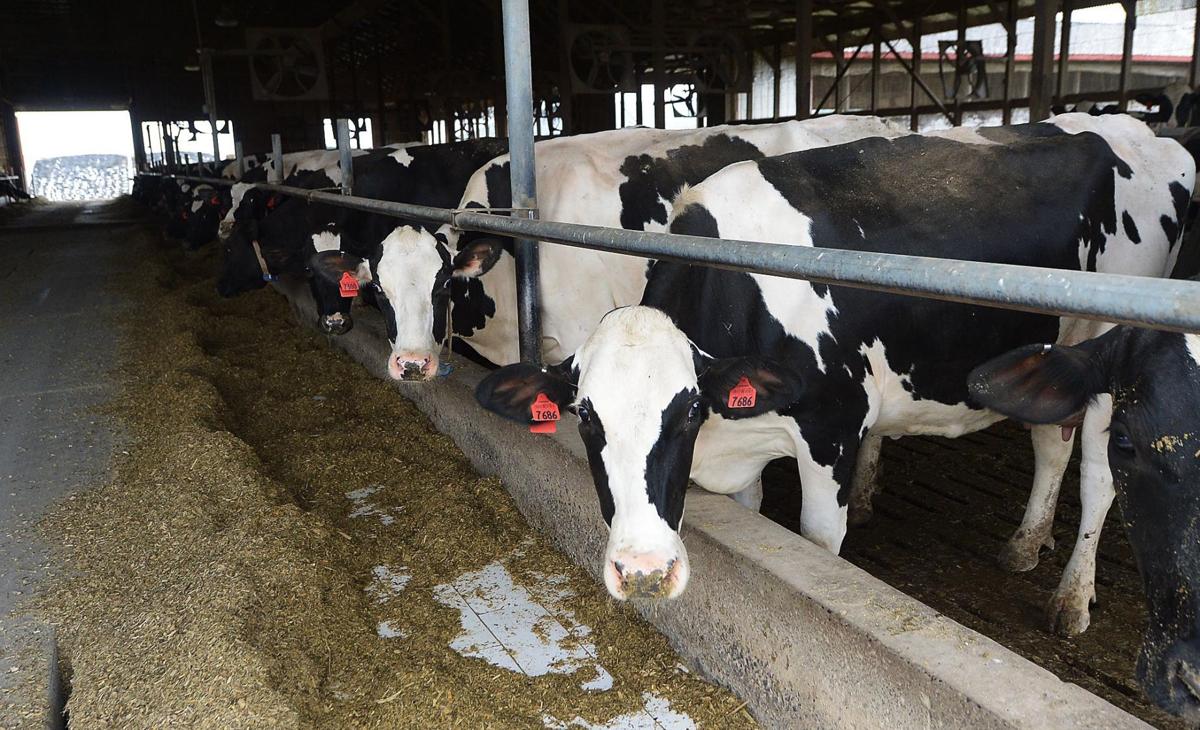 Pennsylvania Agriculture Secretary Russell Redding told local farmers earlier this month that the state has their backs when it comes to diversifying agriculture in order to cope with ongoing market volatility.
Pennsylvania Agriculture Secretary Russell Redding told local farmers earlier this month that the state has their backs when it comes to diversifying agriculture in order to cope with ongoing market volatility.
Farmers from southern Cumberland and northern York counties gathered at Baker’s Restaurant in Dillsburg Oct. 12 for the breakfast event, hosted by state Rep. Dawn Keefer (R-York/Cumberland), where Redding was the featured speaker.
“We’ve built a system that’s dependent on international markets, because our own population and market here at home is stable,” Redding said. “The growth element is going to be in other parts for the world, and we have to figure out how to take advantage of that.”
With no indication that milk will become more profitable in the short-term, Redding emphasized diversification, with the department taking a keen look at new dairy products as well as poultry and wood products as a way to bolster Pennsylvania’s farm industry.
“I think there is a premium in the market for us … but we don’t market it,” Redding said.
Strategic plan
The department expects to unveil its new strategic plan at the 2018 farm show in January in Harrisburg, Redding said, but one of the core components already being realized is the inclusion of farm-related operations not included in the standard United States Department of Agriculture census.
The equine sector, for instance, is only counted if the horses are being used for farm labor, and not if they’re being raised for recreation or racing use. The official sphere of agriculture also doesn’t yet count deer farms, which have been a boom industry in Pennsylvania.
“Ten years ago we had about 200 deer farms in the state, now there are over 1,200 registered,” Redding said. These operations send most of their deer out of state, typically to hunting preserves, although regulations regarding the spread of chronic wasting disease are tight.
“The amount of testing that is required for these farms to move deer off their premises is what really put them on our radar as a sector that needed assistance,” Redding said.
The department is also seeking co-development opportunities with the forestry industry — the harvesting of trees and creation of wood products accounts for 550,000 jobs and $133 billion in GDP for Pennsylvania each year. This also include the plant nursery industry, which can be a major element on some farms.
This dovetails into the larger issue, Redding said, of Pennsylvania needing to be better equipped to sell value-added and artisanal products, as opposed to base goods like fluid milk.
One of the issues is with port access. The bulk of high-value farm exports, from specialty meats and cheeses to Amish furniture, go through the port of Richmond.
“There were some historic challenges with Philadelphia, one being the additional work it takes to get there if you’re coming out of the Midstate or west of the Alleghenies,” Redding said. “It was also an issue with destinations, which is why we’re getting back into this topic because China is now the major interest in Philadelphia.”
Dairy farms
But for farmers who are dependent on producing basic dairy products, Central South America is still a lifeline. Roughly 25 percent of fluid milk capacity goes through Mexico and further south, Redding said — a market that has seen increased competition as Australia and New Zealand also ramp up their exports to Latin America.
How much overseas markets can absorb is the big question. Because of high prices in past years, particularly driven by consumption in Asia, farmers have ramped up production.
“The equilibrium between what’s produced and what’s consumed matters a great deal,” Redding said. “You have to remember that we’ve added, in the last 10 years, another billion pounds of milk production in Pennsylvania alone.”
However, China — which had picked up most of the US excess production — began to curtail its dairy imports, with powdered milk sales to China dropping about 21 percent in 2015, according to the USDA.
The subsequent price dive on base goods, such as milk, butter, and bulk cheese, has led to increasing efforts to buoy prices in the US, including the USDA’s announcement in 2016 that it would be buying 11 million pounds of cheese for government food banks in order to reduce a 30-year high in excess cheese inventory.
The way out of the cycle, Redding said, is for the US, and particularly Pennsylvania, to diversify its milk products, to include more specialties and extracts commonly used in “nutraceutical” supplements.
However, Pennsylvania lacks much of the infrastructure to do this. Most of the higher value-added dairy products are arriving at Richmond and Philadelphia from Michigan or Wisconsin. While dairy processors in Pa. have added infrastructure in the past 10 years, it’s has been almost entirely related to powdered milk and butter, neither of which are profitable for farmers.
“We have sufficient fluid milk capacity in Pennsylvania. What we’re lacking is some of the specialty products,” Redding said. “There are other product areas we need in Pa. to keep those farms profitable and viable.”
One diversification effect has been an increase in poultry — 250 farms have added broiler chicken operations over the last two years under a push by Bell and Evans, Redding noted. But side business in chicken farms can’t, in itself, save the dairy economy.
“Part of this conversation is the expectation that those who have historically been the owners of the dairy processing facilities, we have to have an honest conversation as to if they are the ones who can solve this,” Redding said. “This is now an issue squarely in the hands of the dairy industry, not a particular farm or cooperative.”
Source: Cumberland









